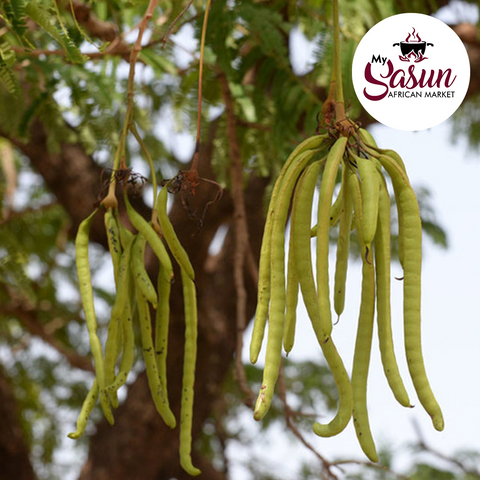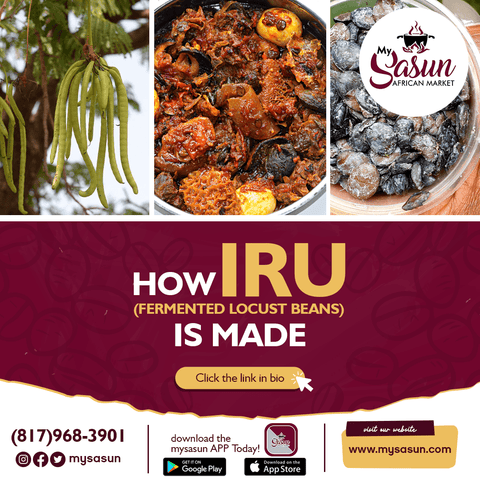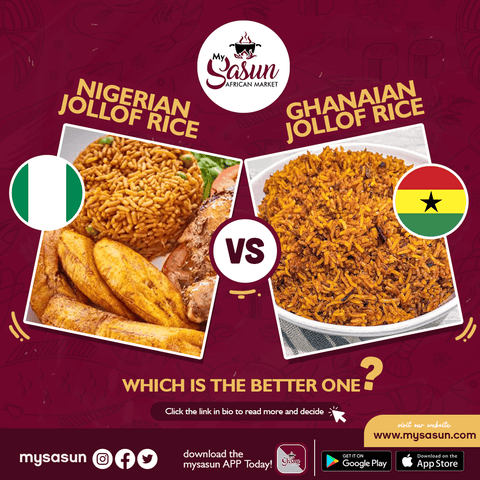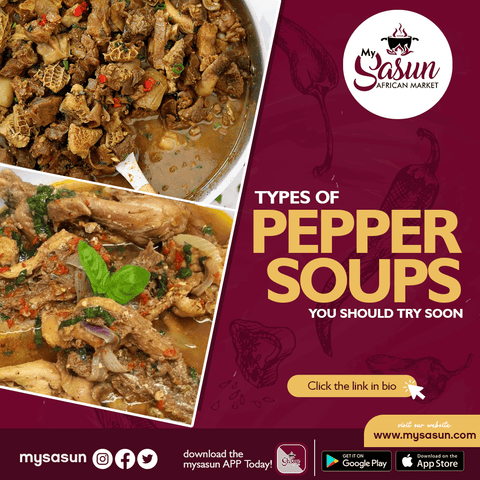I love Iru so much.
One main Nigerian food I would always order for, living in the diaspora, is Iru. Known as Locust Beans in English, Iru is one of the main foods that make Nigerian food Nigerian indeed. I love the way it changes the taste of my vegetables and have it smell like Heaven to me😂😂😂 (This is a highly contentious statement for many, I know. Haha)

Some people are so addicted to Iru to the extent that they can add it to their fried eggs, jollof rice, fried pepper sauce, fried rice, noodles-just name it! I once visited my aunt who prepared scrambled eggs for us to eat with some bread. I tell you, I couldn’t help but reject the meal. Hahaha, I am not an Iru extremist. Are you? Or perhaps a regular lover, an indifferent lover, or a hater? Haha.
While so many people love it, a majority do not know how it is made. So, in this blog, I will be walking you through the methods by which this delicious local spice is made. Before then, let's know more about locust beans.
READ DELICIOUSLY HEALTHY MEALS YOU CAN MAKE WITH BEANSWHAT ARE LOCUST BEANS?
Iru, or fermented locust bean, is a popular condiment in West African cooking. Iru is so healthy, flavourful, and rich in protein and fats, and it imparts a deep umami flavor to savory and sweet dishes..

When I say umami flavor, what do I mean? Umami is one of the core fifth tastes that include sweet, sour, bitter, and salty. This is the best way the taste of locust beans can be described. Trying to compare locust beans to another taste will be difficult just like it is nearly impossible to have a substitute for Iru. Nigerians in the diaspora can substitute kale or spinach for ugwu which is a staple vegetable type in Nigeria but when it comes to locust beans, it is nearly irreplaceable!
This ingredient goes by a variety of names depending on the region, but it is called Iru by the Yorubas, in the northern part of Nigeria, it is called Dawadawa, in some parts, it is called Ogiri or Okpei and in some parts of Edo state, it is called Ugba. It has been used for centuries across West Africa for its delicious and healthful properties.
Before the invention of all these MSG seasonings, Iru has been used for centuries across West Africa for its delicious and healthful properties. It was the major seasoning for (and still is though) native meals, stews, and sauces.
Today, however, Locust beans are at risk of disappearing from kitchens due to neo-colonialism. It is being displaced from kitchens, dining tables, recipes, and dishes by-products from global brands. Also, the primitive, local way of preparation and the fermented smell that it gives could be a cause of the gradual extinction. It needs to be preserved because the fruits, seeds, leaves, nuts, pods, and essential oils of the African locust beans are highly valuable to the economy, health, and culture of our nation.
HOW ARE IRU (LOCUST BEANS) MADE?
So, let me explain to you this way so it doesn’t get complicated and I lose you along the line. So, there is a tree called the Parkia Biglobosa tree. You can see the tree below to get what I am saying better:

This tree produces some long, green pods from its branches. It is in these pods that locust beans are found. Is that clear? Now, let me describe how the inside of the pod is:
The inside of the pods contains fresh locust beans which are surrounded by yellow pulp. The pulp is sweet and tart and is an important source of Vitamin C. People in the village harvest the pods just to suck out the pulp at times.

Step 1: The ripe, dry pods are collected so that they can be decoded in order to extract the seeds from the yellowish pulp.
Step 2: Afterward, the seeds are then collected and selected to remove the seed coats.
Step 3: The seeds are boiled till they become soft. Wood ash can be added to the iru seeds to fasten the boiling process.
Step 4: The boiled seeds are pounded to remove the husks (In some places, to remove the husks, the boiled seeds are trampled on with feet in a large bowl or designated area)

Step 5: The dehusked beans are repeatedly rinsed in cold water with a basket and thereafter sorted.
Step 6: The boiling and the pounding processes are repeated till all the husks are removed, rinsed, and sorted.
Step 7: The seeds are drained with a local sieve and then spread in a fermenting perforated calabash (lined with wood ash) known as nkata or ajere. The calabash is then wrapped with leaves and placed at room temperature to ferment for 2-5 days.
READ TOP 12 REASONS WE SHOULD EAT MORE FISH
Step 8: Once the locust beans are fermented, a large quantity of salt is added to preserve the shelf life.
After fermentation, two types of the final product (iru, dawadawa) can be obtained. There is a style called iru woro, where the fermented beans are sun-dried as loose beans. This type of Iru is used mostly in vegetable soups like Efo Riro, Egusi soup, Ofada sauce, Ila Asepo e.t.c

Then, there is another style of further wet preparation and mashing the beans into cakes. This is known as Iru Pete. To make Iru Pete, during the boiling process, an extract said to be derived from the Roselle (zobo) plant -Hibiscus sabdariffa- is added. This helps the Iru soften, break down and turn mushy. It is also scooped into a calabash basin and left to ferment for 3 days before salt its added. Iru Pete is mostly used to cook Ewedu. However it can be used in Efo riro, egusi and for people who don’t like seeing whole Iru seeds in their soups.

NEW VARIATIONS OF THE FERMENTED LOCUST BEANS
There are two new variations of Iru coming up these days:
- The Dried Iru discs
- The powdered iru
The Dried Iru discs: These are made by molding the fermented locust beans into thin patty-like discs which are then either sundried or smoked over an open fire. To use this, you soak in warm water till the seeds are loose and use.
The Powdered Iru: This is especially for family and friends in the diaspora as well as people who like Iru and its benefits but would prefer not to see the seeds in their foods as they eat. It is derived by blending dried fermented locust beans into powder. It is easier to store.

ROUNDING OFF...
I hope that with this blog post, I have been able to explain in clear terms how one of the most beloved cooking condiments of Nigerians and fellow West Africans, Fermented Locust beans is made. Do well to leave me a comment below so that I can hear from you. Tchau!







Comments (4)
Am here to let the whole world know that I was diagnose of herpes 3 years ago where all hope was lost and I had nothing to do about it,I just accepted the faith that one day I will cure of this disease and I just pray everyday for a helper and one day my sister introduce me to a herbal doctor man called Dr ahonsie that she saw him on internet well I contact him on his email,I was not fully convinced until he sent me the herbal medicine which he ask me to take for two weeks I took it with faith and i went for a retest in different hospitals and today am cured of this disease and am also using this medium to let all those having STD,like herpes and the rest not to give up,their is a man who can cure you,his name is Dr ahonsie . contact the great herbalist via his Email: drahonsie00@gmail.com / WhatsApp: +2348039482367. https://drahonsie002.wixsite.com/dr-ahonsie
Hello everyone, i have a very important information about herpes virus, i was a victim of hsv1&2 until i met doctor Ahonsie, it still feels like a dream to me. it has been two years now, i have not experience any breakout of herpes. I new about him through a post made on social media, a lady shares her experience and then i decided to contact him and ever since i contacted i was encourage and with no doubt i was cured from herpes simplex in just two weeks. He also treat other illnesses like HPV, HIV, CANCER, THYRIOD, PENIS ENLARGEMENT, and more contact him via Email: drahonsie00@gmail.com / WhatsApp: +2348039482367. https://drahonsie002.wixsite.com/dr-ahonsie https://www.facebook.com/drstellaherbalhome?mibextid=ZbWKwLThanks
Being the winner of a multi-million-dollar lottery certainly is a life-changing event for almost every single lottery winner. My name is Mavis Wanczyk from Chicopee, Massachusetts, the famous Powerball lottery winner of $758 million (£591m). I know many people would wonder how I had won the lottery. Would you believe me if I told you that I did it with spell casting? I met this famous spell caster known as Great Odunga and he was the one who did it for me. As shocking as it was to me, my famous comment to the press was “ I’m going to go and hide in my bed.” Never did I believe that Great Odunga made me wealthy overnight. If you want to have your chance of winning and becoming very wealthy just like me, contact Great Odunga at odungaspelltemple@outlook.com OR Email: odungaspelltemple@gmail.com and WHATS-APP HIM at +2348167159012 and you will be lucky. Thanks for reading and hope to see you at the top
Are you searching for a real spell caster ?
It is amazing how quickly Dr. Excellent brought my husband back to me.
My name is Heather Delaney. I married the love of my life Riley on 10/02/15 and we now have two beautiful girls Abby & Erin, who are conjoined twins, that were born 07/24/16. My husband left me and moved to be with another woman. I felt my life was over and my kids thought they would never see their father again. I tried to be strong just for the kids but I could not control the pains that tormented my heart, my heart was filled with sorrows and pains because I was really in love with my husband. I have tried many options but he did not come back, until i met a friend that directed me to Dr. Excellent a spell caster, who helped me to bring back my husband after 11hours. Me and my husband are living happily together again, This man is powerful, contact Dr.Excellent if you are passing through any difficulty in life or having troubles in your marriage or relationship, he is capable of making things right for you. Don’t miss out on the opportunity to work with the best spell caster.
Here his contact. Call/WhatsApp him at: +2348084273514 "
Or email him at: Excellentspellcaster@gmail.com ,
For more information visit his website:https://drexcellentspellcaster.godaddysites.com